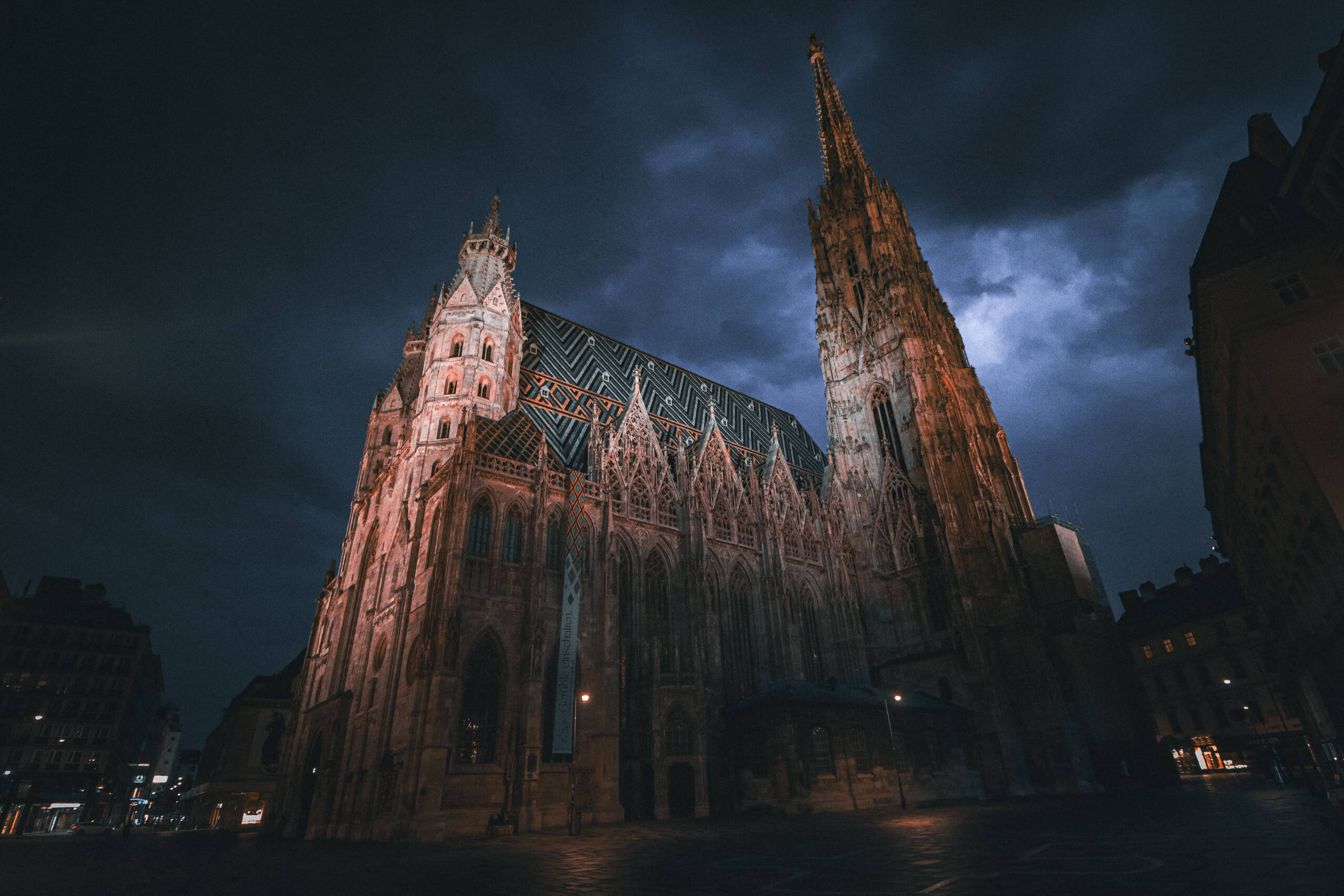There’s a certain drama in standing before St. Stephen’s Cathedral in Vienna after the city has gone quiet, when the last echoes of tourists fade and the Gothic spires glow in the lamplight. The photograph captures this mood perfectly: the massive stone structure rising dark and solemn against a storm-brushed sky, its intricate façade glowing faintly red as if it were lit from within. The patterned roof, with its colorful zigzags and heraldic tiles, peeks through the shadows like a hidden secret. And then there’s the south tower—sharply defined, impossibly tall—slicing upward into the turbulent blue-black sky, as if daring the night to swallow it.

The cathedral, affectionately known as Stephansdom, has been at the heart of Vienna for centuries, serving as both spiritual anchor and cultural icon. By day, the square in front of it is filled with street performers, horse-drawn carriages, and camera-snapping travelers. By night, though, it belongs entirely to itself. The absence of crowds lets you feel the weight of its history—wars, fires, Habsburg coronations, Mozart’s wedding—and you can almost imagine monks and masons still moving through its arcades, chiseling stone in the flicker of candlelight.
What makes the image so striking is not just the monumentality of the cathedral but the atmosphere surrounding it. The wet cobblestones reflect the orange streetlamps, the smaller houses at the edges seem to bow to the great structure, and the clouds rolling across the night sky give the sense of an old painting suddenly sprung to life. It’s Gothic not only in style but in spirit: a reminder that architecture, when done at this scale, isn’t just about walls and spires—it’s about creating a stage where time, faith, and weather all conspire to make you feel small and awestruck.
If you ever find yourself in Vienna, try visiting St. Stephen’s not at noon with the crowds, but late in the evening, when the lights come up and the sky turns indigo. It’s in those quiet hours that the cathedral really speaks, and you begin to understand why it has stood for nearly a thousand years as the soul of the city.
Leave a Reply